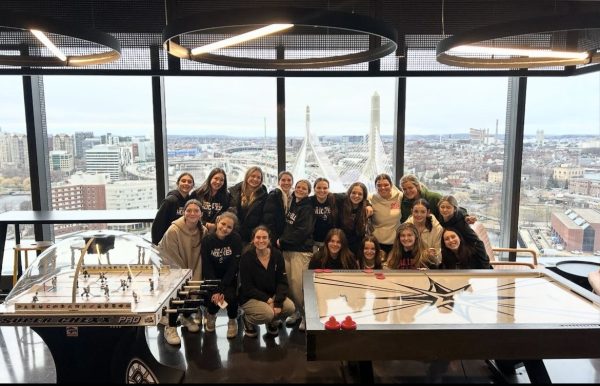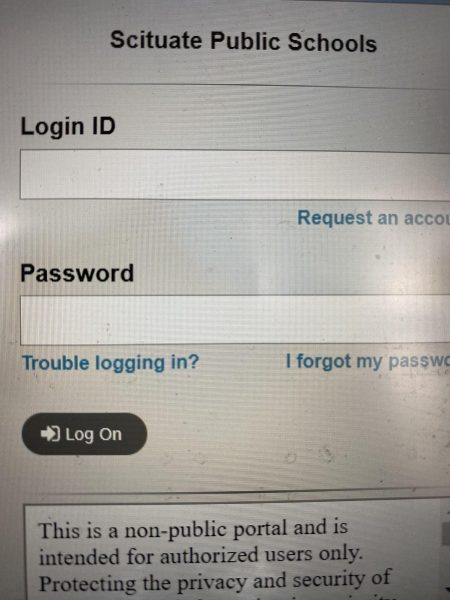BRING IT FROM (C)H(R)OME

Pictured to the right are several students utlizing chromebooks supplied by the school during class. Hopefully many students will bring their own devices to be used in a classroom setting similar to this one next year.
June 10, 2016
Scituate High School is raising the bar of the “bring your own device” initiative for the upcoming 2016-2017 school year. The plan began two years ago, designating Scituate as a “BYOD” district rather than a “one-to-one” district.
According to Superintendent John McCarthy, “one-to-one” districts, such as Norwell and Duxbury, loan students a device, such as a laptop or iPad, to use for school purposes.
However, Scituate adopted the BYOD approach in order to replicate the typical college protocol: Scituate students are encouraged to bring their own devices for use in school. Since not every student has access to a device, Scituate schools supplement the BYOD program by providing Chromebook carts for every school and by offering Chromebooks to Scituate residents at a low cost.
According to McCarthy, Scituate students relied heavily on their school’s Chromebook availability rather than the intended BYOD plan. “I think the problem is that we provided too many Chromebooks, and rather than having students bring their own devices, students and teachers started to rely more on the Chromebook carts,” he said.
Next year’s plan involves diminishing the need for the bulky “Chrome carts” that can be heard rumbling throughout the halls of SHS.
They will be replaced with smaller, handheld storage tubs that hold six Chromebooks each and will be present in every classroom in the school. Therefore, if a teacher would like to implement technology into a lesson, the majority of students will be expected to bring their own appropriate devices rather than a teacher reserving a whole cart of Chromebooks for class use.
Some concern has been voiced about what will happen if more than six students need to use a school-supplied Chromebook. McCarthy replied that it will be just as easy to borrow Chromebooks — or even a whole portable tub of Chromebooks — from another classroom.
McCarthy emphasized the policy, “will still be pretty flexible.” He said, “We are sending the large carts down to the elementary schools to be filled up with new Chromebooks, whereas Gates and the high school will have 88 tubs for 88 different classrooms.”
The district’s goal is for significantly more students to bring their own devices to school. Teachers will establish this as an expectation in the classroom to prepare students for success in today’s technologically advanced society.
Teachers throughout SHS are excited for next year’s BYOD policy because they expect more accessible technology for students.
Courses such as but not limited to English, Social Studies and Science will benefit due to the amount of academic writing and research.
Teachers who utilize their Chromebooks less can lend their designated Chromebooks to other classes if necessary.
According to English teacher Ms. Blake, “While this may not benefit the school, it will benefit the students.”
SHS history teacher Ms. Lesniak said using Chromebooks in class “will offer students a chance to work on real world tasks, such as creating videos, writing papers or utilizing online resources.”
Teachers expressed that the demand for technology in education today is so prevalent that the BYOD policy is necessary and beneficial to the school in order to prepare SHS students to thrive in their endeavors outside of high school.









